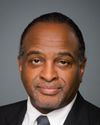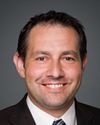Thank you.
Thank you, Mr. Chair and members of the committee.
It is an honour to be here among you to discuss our government's priorities.
I would also like to point out that your review of Canada's 150th anniversary celebrations is very important to the government. As you know, we want this commemoration to reach all of the regions through its pan-Canadian events and themes that should involve all of the regions of Canada. Your study of this topic is very important. I want to wish you good luck in your review of this project.
I'm here today to discuss with you funding my department is seeking from the Parliament of Canada through the supplementary estimates that will enable us to implement a number of our government's key priorities for Canadians.
With me today are Daniel Jean, deputy minister of Canadian Heritage, and Robert Hertzog, director general of the financial management branch.
In the 2011-12 supplementary estimates (B), we are asking Parliament to approve $165.9 million in additional funding: $8 million in operating expenses, and $157.9 million in grants and contributions. The funds that we're seeking will support programs in various sectors of Canadian society.
Mr. Chair, I'd like to review a few of what I consider to be key initiatives that are addressed in supplementary estimates (B), for which we are seeking the approval of Parliament.
I've already announced our government's plans for commemorating the 200th anniversary of the War of 1812, a war that was a defining event in Canada's history, paving the way for Confederation. The $4.8 million in additional funds will allow us to implement the commemorative projects and events that we have planned, and to support community-based activities across the country.
Over the next three years, our government plans to invest significant funds to increase Canadians' awareness of this defining event in our shared history. These funds will go to pan-Canadian educational campaigns, which will include a national documentary, a travelling museum exhibit, and the naming of October as the month of the commemoration of the War of 1812.
We will support over 100 local events, festivals, and re-enactments across the country, and we're investing in enhanced programming and making significant improvements at key War of 1812 national historic battle sites. We're going to have a permanent War of 1812 monument here in Ottawa, and we're going to have recognition of our Canadian Forces regiments in 1812 ceremonies.
For Sport Canada's hosting program, we are budgeting an increase of $13.4 million. This amount is part of the government's commitment to fund capital projects for the 2015 Pan American and Parapan American Games in Toronto. With the recent conclusion of the 2011 Pan American and Parapan American Games, from which our talented athletes brought home a total of 182 medals, attention is now focused on Toronto as the next host of the games in 2015. As a proud partner in the games, the government will invest up to $500 million through Sport Canada's hosting program. Canada is a proud sport nation with a fantastic sporting tradition, and we are committed to ensuring that our athletes can compete with the world's best.
Sport Canada's hosting program provides funding to help Canadian communities and national sport organizations host world-class international events, such as the Pan American and Parapan American Games. This funding also allows our athletes to compete on home soil, which brings countless benefits to the hosting communities and promotes Canada abroad.
The $100 million in funds that we are also requesting in these estimates are funds for the Canada Media Fund. As you know, the Canada Media Fund helps to ensure that Canadian choices continue to be available on television and on other digital platforms.
The Government of Canada support for Canadian programming has a multiplier effect. The $134 million that we invest in the Canada Media Fund creates an additional—on top of that government investment—$200 million worth of production activity. This leads to 7,000 production jobs across the country and 600 hours of programming available on multiple platforms. In 2010-11, the Canada Media Fund, which combines both the public and the private investments, invested $337 million in Canadian content creation, generating over 2,400 hours of new Canadian programming.
The $15 million in the supplementary funds that we're seeking for the Canada Periodical Fund will support and encourage the creation of Canadian magazines and non-daily newspapers, and help to ensure that Canadians have access to them.
One example of how this fund works is the Newsstand Marketing Project that we helped fund last year. Magazines Canada partnered with regional magazine associations and retailers across the country to increase the presence, selection, and sales of English- and French-Canadian magazines at major and independent newsstands. The plan offers a free digital magazine with the purchase of a single copy of any participating magazine. This plan has not only increased single-copy sales of Canadian magazines, but also increased the profile of small- and medium-sized Canadian magazines in large retail outlets.
Finally, our proposed transfers to the Canada Council for the Arts and the National Arts Centre—$127,000 and $150,000 respectively—will, among other things, support French-language theatre in Canada.
Mr. Chair, while we are seeking these funds, I believe we have shown ourselves to be good stewards of public funds. Despite fiscal restraint, we have accomplished a great deal, and we will continue to manage our budget carefully.
Since I arrived at Heritage Canada, the department has launched an initiative to modernize its operations and find innovative solutions to financial challenges in order to better serve Canadians. We implemented reductions while minimizing the impact on services and programming to Canadians. We have decreased operational spending of the department by 25% since 2009-2010 and have eliminated 445 full-time positions. This means more money directed into the hands of artists and creators, and less money spent on the bureaucracy here in Ottawa. This is good news for the cultural community. My department is smaller, but our investments in culture have increased because of these efforts.
During the recession we were the only country in the G8 not to decrease, not to maintain, but to increase funding to arts and culture. We know that arts and culture play a vital role in the lives of Canadians and in the development of communities throughout the country. We know that culture and heritage help to build strong communities, while also contributing to the economy. Canadian culture represents $46 billion of our gross domestic product. The cultural sector employs some 630,000 people—which means that 4% of all Canadian jobs come from culture.
Our government has clearly shown that we value arts, culture, and Canada's creative economy. We have supported celebrations, concerts, community events, and festivals across the country. And we renewed our five-year funding programs, including those for music, books, and periodicals.
As we modernized our cultural support programs, we adapted them to the digital age, and this change is now bearing fruit. For example, the Experimental Stream of the Canada Media Fund—an innovative public-private partnership—is pushing the boundaries of media consumption for Canadians and building a stronger, ground-breaking cultural industry. Through this fund, we invested $1 million in a project to develop a console game called Papo & Yo. Created by the Montreal-based indie production company Rezolution Pictures, its market release is planned for early 2012. Yet, already, this truly unique game has been nominated for 20 industry awards and has won 6, including 3 top awards at the Electronic Entertainment Expo held in Los Angeles in June. This is but one success story of many.
The highlight of this year for my department was the recent visit of Their Royal Highnesses The Duke and Duchess of Cambridge. The event was tremendously successful, bringing Canadians together across the country. Our website, YouTube videos, and iPhone and BlackBerry apps served as excellent examples of how modern technology can help involve Canadians, especially youth, in events of national significance.
Plans have already begun for celebrating Her Majesty Queen Elizabeth II's Diamond Jubilee in 2012. I have already announced the community funding program to support local celebrations and projects and a mobile application to provide information on this key event in our history. We will soon unveil the commemorative medal program, a website, and a social media program.
This historical anniversary is one of many that we will commemorate on the road to 2017—Canada's 150th anniversary.
As I mentioned in my last appearance, we have begun plans and preparations for celebrating this important landmark in our country's history, as well as many of the anniversaries that will be leading up to it. I continue to follow your study, which will be integral in developing our plans for this monumental celebration.
Because we value our heritage and we want to preserve it for generations to come, we again invested over $400,000 this year to fund film acquisition or preservation activities by Library and Archives Canada under the Canadian feature film policy.
In addition, our Canadian Heritage Information Network invested nearly $1.8 million in the development of original online heritage content by museums of all sizes and disciplines. As a result, 51 new online exhibitions will be added to the virtual museum of Canada.
In the area of official languages, we've signed agreements for four provinces to support French language cultural production and presentations.
Also, over the past few years, our investments with respect to education have resulted in new community spaces in 33 schools, 40 new community schools, and 14 community learning centres. There has also been a 10% overall increase in immersion registration by kids.
I'm proud to say that through the endowment incentives program, which leverages private sector donations to arts organizations, our government, since 2006, has provided over $78 million to support endowment funds in Canada, while the private sector has provided over $120 million, for a total of $198 million leveraged in investments in arts and cultural organizations by having a partnership between the Government of Canada and the private sector.
Through the Canada cultural spaces fund, we have funded 609 cultural infrastructure projects in 239 communities across Canada, for a total of approximately $199.4 million.
The Canada arts training fund supports 39 national training schools that provide the highest calibre of artistic training to Canada's most promising artists in a range of disciplines such as ballet, contemporary dance, theatre, and music. Our annual investment in national training institutions is $22.7 million.
I believe my department can be proud of its numerous achievements over the past year. With the approval of the budget before you, we will pursue our efforts on several fronts to show our continued support and commitment to the arts, to culture, to sport, to history, and to heritage.
I will be pleased to work with you on making sure that these projects are fulfilled successfully, and I look forward to your questions.












